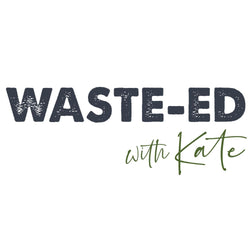
Covers Boosters and accessories for Cloth Nappies
Covers And Wraps For Cloth Nappies
A cover is the outermost layer of a nappy and this is what prevents the moisture in the nappy leaking out onto clothes.
PUL covers
A PUL cover, in my opinion, is the best all-round cover available. A PUL cover is normally made of polyester with the inside of the cover having a polyurethane layer sprayed on to laminate the fabric. This makes it waterproof but still very soft any pliable. By laminating the fabric, it gives the wrap a high degree of water resistance without compromising the breathable quality needed for the comfort of your baby.
When cared for properly they will last. Most PUL covers can be washed with the nappies and dry in minutes. They are my favorite for day and night time use.
Fleece and Wool Covers
Fleece and wool covers both work quite differently from PUL. With PUL, the cover is used contain the moisture, while still allowing a little air to pass through. Fleece and wool covers tend to allow much more air in and out of the nappy and this air-flow can allow some evaporation of moisture from the nappy. So while they contain the moisture in the nappy they can actually help get rid of some of it as well. Contrary to what most people think, this actually makes them the coolest cover option. The cooling effect of the evaporation makes the cover a personal, bottom-sized air conditioner.Fleece and wool both also act as a barrier to prevent leaks because they do not hold water and are generally a fitted wrap with elasticized legs. One issue with wool is it is only made water resistant by the presence of lanolin so wool covers need to be re-lanolised every now and again. This is done by soaking the cover in a diluted lanolin solution.
The only times I would avoid using fleece or wool covers is when a synthetic fitted nappy is being used or if a baby is sitting in the car or pram for extended periods because of the lack of airflow. This will restrict evaporation and could potentially cause leaks as the wool and fleece covers are not technically water proof, they are highly water resistant.
How many covers will I need?
Unless a cover is attached to the nappy like a pocket or an all in one, it will not need to be changed at every nappy change. Some parents can use a clean cover at the start of the day and use another clean one for overnight. Or sometimes it is possible to use the same cover for 24 hours. However, once poo makes contact with the cover it needs to be washed. I generally suggest that customers have 4 covers so they have one on baby, one in the wash, one drying and one ready to be used.The same cannot be said for wool covers as they cannot be used for two consecutive nappies because the fibers need to 'air'. Most parents tend to alternate between two wool covers throughout the day or just have one wool cover for night time use only.
Boosters/Inserts For Cloth Nappies
BOOSTERS / INSERTS - WHAT ARE THEY?
Boosters are used to provide additonal absorbency. Boosters may also be known as inserts or doublers.
One of the advantages of using cloth nappies (as compared to using disposable nappies) is that you can adjust the absorbency of any cloth nappy by adding in extra fabric in the form of a booster.
A booster is normally a three layered pad that can be make out of any absorbent fabric. Some have a fleece top on them to give a stay dry layer against babys skin.
Boosters are generally used at night time to add absorbency to the nappy extending the nappies overall capacity.
Some parents will never need to use them because they achieve enough absorbency from the nappy, where as others will use a booster or two as part of their night time nappy combination.
Accessories For Cloth Nappies
Nappy Liners
Reusable Fleece Liners
Re-usable micro fleece liners are one of the most popular reusable liners. Fleece liners also make disposal of the poo less difficult, prevent staining on your nappies and keep baby dryer.
One of the benefits of fleece, being a synthetic material, is that it does not absorb moisture which means it always sits dry next to the skin. Basically it allows urine to pass into the absorbent part of the nappy but does not let it pass back to the skin unless the nappy is totally saturated. The fabric of the nappy will hold the urine, while the non-absorbent fleece liner will not.
Generally the poo will just roll off when the liner is held over or rinsed in the toilet. The liner is then put in the nappy bucket and washed along with the nappies. Fleece liners are cheaper than using disposable liners. They can be brought for around a dollar each and they will last for a considerable time or you can make your own just by cutting up microfleece (they do not need to be sewn)
Other fabrics that liners can be made from include 100% knitted polyester; sometimes know as suede cloth, or silk, which is excellent for very sensitive skin.
Disposable liners
First off let me explain that Flushable Liners should not be flushed down the toilet. They along with the so called flushable wipes are creating havoc for many councils all over the world as they get caught in the sewers, attract fat and then turn into fatbergs.
However with most brands of flushable (non Flushable) liners you can wash them a number of times and reuse them. Make sure you pop them in a laundry mesh wash bag so they don't get in to the pipes of your washing machine. Once they have worn out, pop them through one last wash to ensure they are clean and pop them in your worm farm or compost bin (they mush have no poo or urine on them). But I would make sure they are worm / compost friendly by testing one in your bin first.
Otherwise once you have rinsed the poos out of the liner it must go into your landfill bin.
Note that the blue & white disposable liners that you see in supermarkets need to be disposed of in the rubbish and not flushed down the toilet.
Whichever type is used, please note that you should ALWAYS use a fresh liner at every nappy change.
Boosters / Inserts
Boosters / Inserts are used to provide extra absorbency - by boosting the nappy. One of the advantages of using cloth nappies (as compared to using disposable nappies) is that one can adjust the absorbency by adding in extra fabric in the form of a booster.
A booster / insert is normally a three layered pad that can me made out of any absorbent fabric. Some have a fleece top on them to give a stay dry layer. They are generally used at night time to add absorbency to the nappy extending the nappy's overall capacity. Some parents never need to use them because the nappy's absorbency is enough and others add a booster or two as part of their night-time nappy combination.
You can make your own boosters from old cotton towels by cutting them up and overlocking around them.
Flushable Wipes
Are NOT flushable! They along with the so called flushable liners are creating havoc for many councils all over the world as they get caught in the sewers, attract fat and then turn into fatbergs. Check out the fatberg epidemic ...https://www.theguardian.com/uk-news/2015/apr/21/huge-10-ton-fatberg-removed-chelsea-sewer-london
Flushable liners should be treated the same was as disposable wipes and be rinsed and thrown into your landfill bin.
Reusable wipes
Reusable cloth wipes are a great alternative to buying disposable wipes! They can also save you hundreds of $$$
Washable wipes can also be home made by cutting up a towel or buying some fabric to make your own. Mine are around the same size as a face cloth.
Washable wipes are all I ever used. I purchased 24 terry wipes (flannels / face cloths) when my son was born and only ever used them with water, saving myself hundreds of dollars. Water works wonders on bottoms! I never used a solution with them and generally used 1-2 wipes per change. When I have had to use disposable wipes while out, I found I was using at least 10 to 15 wipes per change because they are so small and flimsy. So we carried a few reusable wipes damp in a resealable container.
You do not need to fragrance the wipes. Even natural products like tea tree oil and rose water can be harsh on a baby's perfect skin. Water is the BEST!!
At home you can use an ice cream container that you stack your wipes up in, in the morning and run a bit of water over them and then pop the lid on. The water will soak in and they will be room temperature. Have another ice cream container on the other side of your change mat and pop your used wipes and nappy into it and then deal with it after you have finished changing the baby.
Washable Nappy Bags
These bags are waterproof and made out of PUL. These are used to put your wet or dirty nappies in when out and about. Then when you get home, empty the nappies out of the bag into the nappy bucket or washing machine and wash the empty bag with them.
Nappy / Laundry Mesh Bag
An optional extra. I used one of these to wash my covers in, thus keeping them separate from the nappies. In the UK, they have the bucket lined with the mesh bag. Come laundry time, the bag is lifted out and the whole bag is placed in the washing machine, with the bags neck open, allowing the nappies to fall out in the washing machine through the wash.
Nappy Sprayer
This handy little nappy tool is fantastic for cleaning the nappies over the toilet. It fastens to your toilet cistern and is a piece of hose with a spray head at the end of it. You simply hold the nappy over the toilet and spray and anything nasty goes away.
Fabrics For Cloth Nappies
Absorbent Fabrics
Nappy Fabric Types
Today we are lucky to have a huge selection of fabrics available to us for nappies. Each fabric has its own features and benefits. I am of the belief that fabric is one of the most important aspects of your chosen nappy system.
Below I have outlined the four most common nappy fabrics and what their main features are.
Cotton - The all round performer
- Durable
- Drys reasonable fast
- Great for night-time and heavy wetters
- Will biodegrade in a compost bin or Worm Farm when finished with
As a naturally occurring cellulose cotton has been used for centuries. It makes excellent nappies due to its absorbent nature. Cotton is one of the most durable fabrics and dries in a reasonable time. Cotton nappies can come in many different fabric variations like toweling, twill, cotton velour just to name a few.
I rate cotton and bamboo as the the best night-time nappy fabrics available. They will always out preform microfibre because the fabric retains the liquid where as microfibre released liquid when under pressure.
Bamboo - Slim fit, Anti-Bacterial and silky soft
- Trim Fitting
- Takes longer to dry
- Great for sensitive Skins
- Antibacterial and Antifungal
- Great for use overnight and with heavy wetters
One of a new breed of man made cellulose fibres. It is an incredibly soft fabric with a feeling akin to cashmere/silk and has natural antibacterial properties. Bamboo is a highly sustainable resource, which grows without the need for agrochemicals and has a very short growth cycle. Because of the way the bamboo absorbs into the fibres, it takes a longer time to dry than cotton but bamboo fabric makes very trim nappies and absorbs liquid very quickly.
Bamboo is also great for babies with sensitive skin. I have seen lots of babies that coudn't use any of the other fabrics except bamboo on their highly sensitive skin.
I rate cotton and bamboo as the the best night-time nappy fabrics available. They will always out preform microfibre because the fabric retains the liquid where as microfibre released liquid when under pressure.
Micro fibre - Quick dry, stay soft
- 100% Synthetic
- Drys Fast
- Durable
- Must be used with a liner on top to protect baby's skin
A purely synthetic man made material, micro fibre has one of the highest liquid retention capacities around. Due to the unique way in which it is constructed, micro fibre dries incredibly quickly. It also stays completely soft even after washing in hard water. It pays to use a natural fabric with microfiber when possible as microfiber may have a high liquid retention capacity but if you put pressure on the fabric it cant hold liquid in where as a natural fabric can. Micro fibre is great for hard water areas.
However, microfibre is the only fabric that should not be put directly against baby's skin. It is so absorbent that it will take moisture from their skin and make it dry out. If you feel it against your hands when they are dry it feels yucky, this also makes it uncomfortable for your baby as it is constantly catching on the hairs and dry skin which could irritate them.
Hemp – Great for sensitive skin
- Durable - but goes hard over time
- Takes longer to dry
- Great for sensitive Skins
- Antibacterial and Antifungal
- Great for use overnight and with heavy wetters
Hemp is also used to make cloth nappies. Hemp is durable and super absorbent. Hemp also has antibacterial and anti-fungal properties. Hemp is an environmentally kind choice too – like bamboo the growth of hemp has less impact on our environment. A couple of things to note are that Hemp shrinks a lot on the first wash, you may loose up to 20% and in my experience, it can go slightly stiff over time and will need to be popped through the dryer to soften it up again.
Fabrics – Effect on the Environment
Remember that all fabrics have an environmental effect on the environment during their production phase. You can do a lot of research about it but always read both sides of each story to get the best overview.
Nappy Lady Top TIP: Often using a combination of different absorbent fabrics in a cloth nappy system gives the best overall performance.



Leave a comment